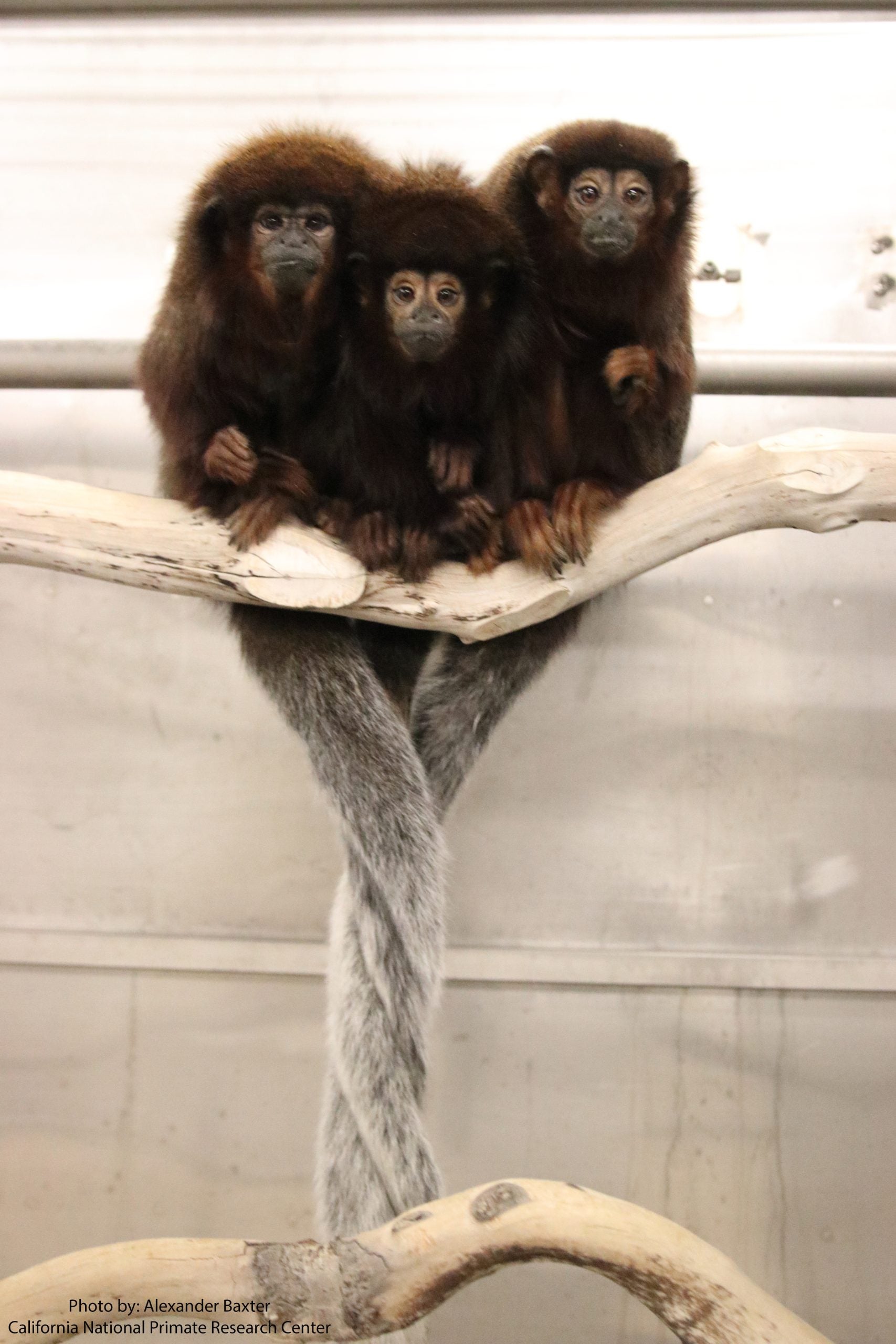 Studies in Primate Pair-bonding and Parenting
Studies in Primate Pair-bonding and Parenting
Titi monkeys (Plecturocebus cupreus) are a pair-bonding South American monkey. Pair bonding is a psychological construct that includes showing a preference for a familiar partner, distress upon separation, and the ability of the partner to buffer their pair-mate against stressors. In the wild and in the lab, titi monkey pair-mates spend most of their time within sight of each other and a lot of it in physical contact with their tails twined.
In our lab, we use different non-invasive imaging techniques to examine the neurobiology of social bonding in this species. Some of our interests include:
-
Social buffering and social isolation: how oxytocin and kappa opioid receptors interact in the context of separation and social buffering;
- Vocal and visual communication: how communication modalities allow for and interact with the formation and maintenance of pair bonds;
- Cognition: how cognition in titi monkeys changes as they form and maintain pair bonds over time and aging;
- Compatibility and pair bonding: how pairing monkeys based on compatibility can lead to an increase in post-pairing affiliation.
Recent Publications
Relationships between cortisol and urinary androgens in female titi monkeys (Plecturocebus cupreus). Gen Comp Endocrinol. 2021
Parenting costs time: Changes in pair bond maintenance across pregnancy and infant rearing in a monogamous primate (Plecturocebus cupreus). New Dir Child Adolesc Dev. 2021
What is a pair bond? Horm Behav. 2021
Compositional variation in early-life parenting structures alters oxytocin and vasopressin 1a receptor development in prairie voles (Microtus ochrogaster). J Neuroendocrinol. 2021
Biobehavioral organization shapes the immune epigenome in infant rhesus Macaques (Macaca mulatta). Brain Behav Immun. 2021
Cannabinoid receptor Type 1 densities reflect social organization in Microtus. J Comp Neurol. 2021
Pharmacological Prevention of Neonatal Opioid Withdrawal in a Pregnant Guinea Pig Model. Front Pharmacol. 2021

 University of California, Davis (UCD)
University of California, Davis (UCD)